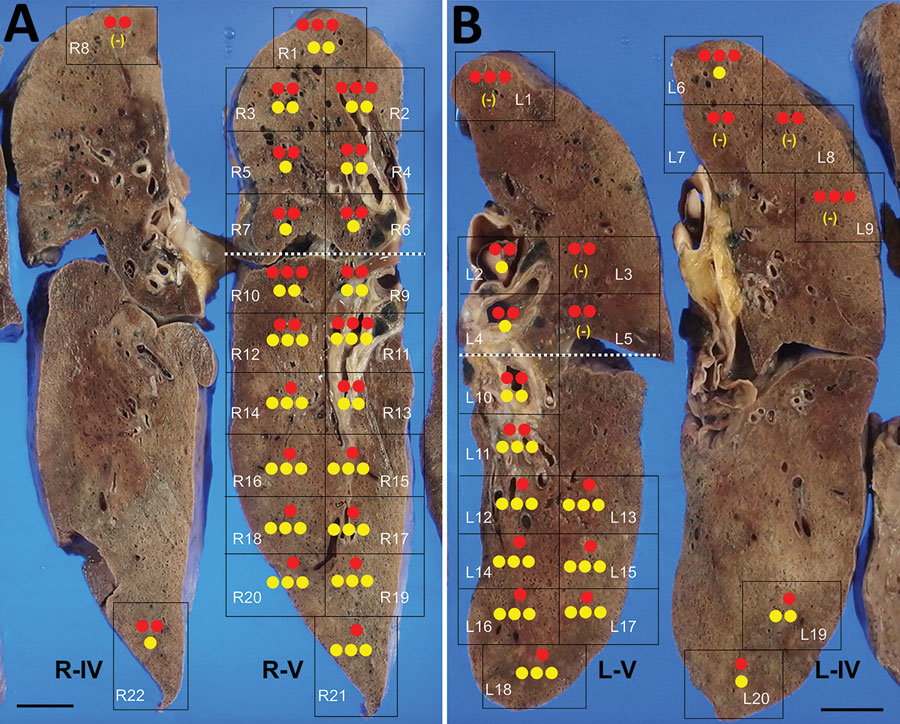Volume 27, Number 3—March 2021
Dispatch
Lung Pathology of Mutually Exclusive Co-infection with SARS-CoV-2 and Streptococcus pneumoniae
Figure 1

Figure 1. Molecular detection of SARS-CoV-2 and Streptococcus pneumoniae in the lungs of a patient in Japan co-infected with both pathogens. The 42 lung sections were analyzed and the amount of SARS-CoV-2 RNA and S. pneumoniae DNA in each section was evaluated. A) The right lung was cut into 6 (R–I to R–VI); B) the left lung was cut into 7 (L–I to L–VII) coronal slices, from ventral to dorsal. Twenty-two right sections (R1–R22) in R–IV and R–V and 20 left sections (L1–L20) in L–V and L–IV are shown in black boxes. The dotted white line is the boundary between the upper and lower lobes. The SARS-CoV-2 RNA score is indicated by the number of red circles and the S. pneumoniae DNA score is indicated by the number of yellow circles. (-) indicates results under the detection limit. Scale bars indicate 2 cm. SARS-CoV-2, severe acute respiratory syndrome coronavirus 2.
1These authors contributed equally to this article.